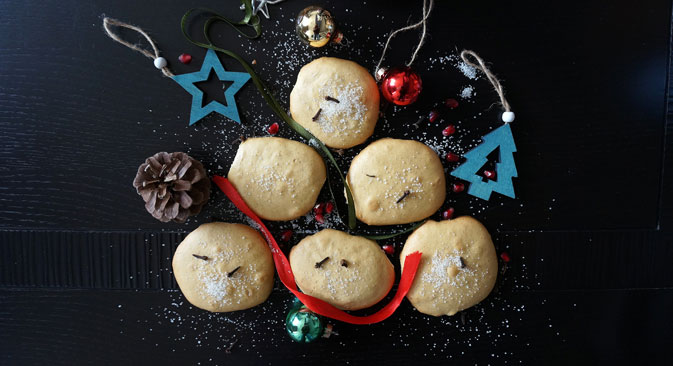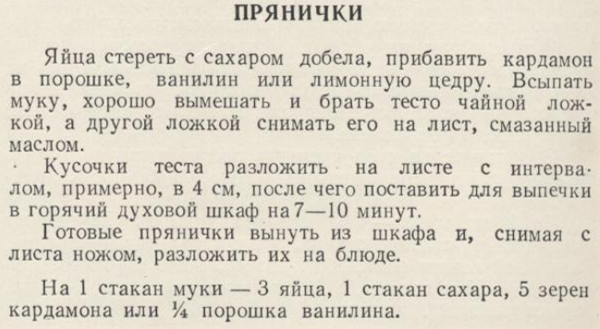
Pryanichki.
Anna KharzeevaMarrying an Australian brought not only Vegemite and Men at Work into my life, but also a new holiday – Christmas on Dec. 25. Sure, we have Christmas in Russia, too — on Jan. 7, but it’s a religious holiday that I never celebrated.
Christmas was the main winter holiday in Russia until the revolution in 1917, with a Christmas tree as the symbol. “Do you know that there was no yolka (Christmas tree) in the Soviet Union till 1935?” Granny told me. “When the government banned Christmas, they banned the tree as well. The first time they brought the tree back was in the 1935-36 New Year celebrations!”
One of the main Christmas treats, which doubled as a decoration for the tree was pryanik – Russian honey biscuits. It was a traditional holiday sweet in pre-Soviet Russia. At first it was expensive (making pryanik requires lots of honey and spices) and the recipe was complex and took a long time to make, so it was a special occasion sweet only. The Christmas tree was therefore a great place for a pryanik. Later they started making smaller and cheaper versions of it, and in the Soviet period, it was to be found on every table:
“We had ‘printed’ pryaniki with a print on top and small round ones. The small ones were an everyday sweet, kids especially loved them. My aunt Ita once sent her son to get some sweets while expecting guests. She gave him some money and said to get whatever he liked, and he spent the whole amount on pryaniki. Aunt Ita was terrified, as pryaniki were such a mundane dessert, that she felt bad serving them to guests!”
Soviet kids didn’t lose their love for pryaniki. An Israeli friend once told me they taste like her childhood – Russian immigrants would share them with her back in the 1970s.
It was a bit of a surprise to find a recipe for pryaniki in the Book, as it’s one of those things no one ever made at home – it was always store-bought, “like sugar or tea” – Granny says.
The recipe follows the party line – it’s simple and calls for inexpensive ingredients. The name is also slightly different – “pryanichki”- smaller, simpler pryaniki (similar to blinchiki, which are the non-yeast version of bliny, Russian pancakes).
Granny said the recipe didn’t look like pryaniki to her at all: “This is outright a recipe for biskvit [a plain cookie]. And I’ll tell you a story about biskivit: your great-grandmother used to make it all the time and bring it to people’s places along with the recipe. When your parents wanted to get married, they went to the registry office, but couldn’t get a good date and came home very upset. Then my mom went to the office with her biskvit and the typed recipe and made sure all the employees tried some. She came home very happy as she got your mom and dad a great day – I think it was even a Saturday!”
I think Granny is right that the recipe in the book is definitely not pryaniki – I added much more flour and more spices than the recipe called for, and they turned out kind of like pryaniki, but delicious anyway. I’m not sure you could convince government officials of much with them, or that they would be good enough for a wedding present or a Christmas tree decoration, but, hey, they only took 30 minutes to make and will therefore be a great addition to the Christmas table!
 The recipe from the Soviet Cook Book, page 290
The recipe from the Soviet Cook Book, page 290
1 cup flour; 3 eggs; 1 cup sugar; 5 cardamom pods or ¼ tsp vanilla powder
Mix the eggs with sugar until all the white has disappeared. Add cardamom, vanilla or lemon zest.
Stir in flour until the dough is mixed well. Drop the dough on a greased baking sheet.
Dough balls should be 4 cm apart. Bake in a hot oven 7-10 minutes.
All rights reserved by Rossiyskaya Gazeta.
Subscribe
to our newsletter!
Get the week's best stories straight to your inbox